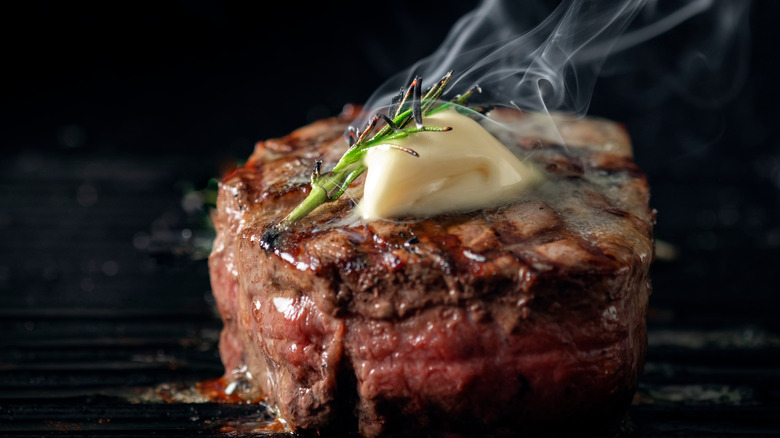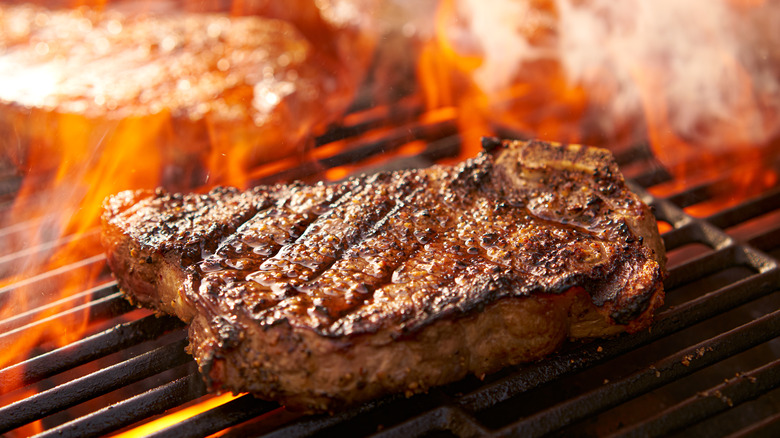The Reason Steakhouses Use Super High Heat
Grilling a steak seems like a task that's simple enough, but steakhouse chefs use a number of techniques to put up a plate of premium beef.
If you're looking to approach steakhouse-level quality in your own kitchen, there are a few simple things you should do. First, a good steak starts with a good amount of seasoning. According to Today, you should salt liberally, especially with thicker cuts. The goal is to have the salt penetrate to the interior of the steak — and that means you have to put a lot of salt on the exterior.
Many steakhouses add flavor to a steak by finishing it with butter. Whether it's a small ladle of clarified butter on top or a basting of butter in a cast-iron pan, a little bit of butter makes a steak taste and look better (via Taste of Home). Another steakhouse tip is to rub a bit of garlic over a cooked steak. As Cook's Illustrated notes, rubbing a garlic clove on a cooked steak infuses hints of aromatic flavor that complement a steak's rich umami.
Using professional-grade heat on a steak
One steakhouse technique that is difficult to pull off at home is getting a perfect crust by searing the steak with extremely high heat. According to Best American Steakhouses, restaurant infrared broilers can reach temperatures of around 1,650 degrees Fahrenheit — much hotter than the maximum temperature of the standard home oven.
If you're determined to get that steakhouse sear at home, there are options available. As Taste of Home notes, cooking your steak over a charcoal grill or in a super-hot cast-iron pan can help to create that desired crust. If you are really invested in making a steakhouse-level steak at home, you can buy a searing grill like the Otto Wilde Grill, which can reach 1,500 degree Fahrenheit in just a few minutes. However, it costs upwards of $1,000 (via Insider).
After you've cooked your steak, there's one thing that you absolutely must do, according to the late Anthony Bourdain. In 2016, the famously-opinionated chef told Tech Insider that not allowing for a 5- to 7-minute rest period after cooking it is one of the worst things anyone can do to a steak. Bourdain goes on to say that the resting period allows for a more desirable, graduated distribution of cooking, from a soft medium-rare interior to a hard outer crust.

